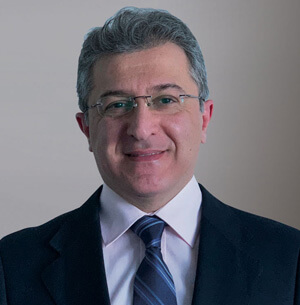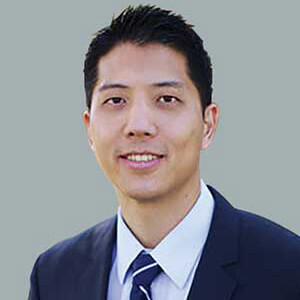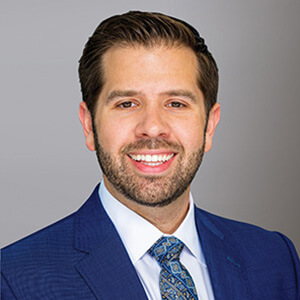Don’t Live with Cloudy Vision
Types of Cataracts
- Nuclear cataracts occur in the center of the lens
- Cortical cataracts occur as wedge-shaped spokes extending from the outside of the lens to the center
- Subcapsular cataracts occur at the back of the lens
Symptoms of Cataracts
- Blurred or dimmed vision (particularly at night)
- Cloudy vision
- Sensitivity to light and glare
- Visual distortions or “ghost images”
- Increased nearsightedness
- Difficulty reading or driving
Causes of Cataracts
- Age-related cataracts are the most common, resulting from a natural build-up of proteins in the lens.
- Congenital cataracts may be present at birth or developed during childhood.
- Secondary cataracts develop when other health or ophthalmologic conditions (such as diabetes) are present.
- Traumatic cataracts can develop after an eye injury.
Symptoms of Cataracts Includes:
Cataract Visual Simulator
Cataract Surgery at Pacific Eye Institute
Modern cataract surgery is much different from the cataract surgery of your grandparents! During the procedure, the cloudy lens is removed and replaced with an artificial lens. Today, cataract surgery involves small incision sizes, anesthesia improvements, improved antibiotics to prevent infection, advanced lens implants for visual clarity, and real-time lens calculations during surgery. All these combined technologies are life-changing for many patients and enable a great deal of lifestyle flexibility. In addition, this procedure no longer requires long hospital stays. It’s typically a 30-minute outpatient procedure we perform in our Ambulatory Surgery Center.
Choosing an Advanced Lens
You will be using your new eyesight every waking moment for the rest of your life. Our cataract surgeons will personally meet with you to discuss what lens would work best for your lifestyle.
Please take as much time as needed to consult with us, as well as your family. Our surgeons, technicians, and surgical liaisons are available to help you make the best decision.
Selecting the right type of lens implant for your eye is very important for your visual outcome. Special eye measurements will provide the data necessary for your surgeon to determine the implant power. Depending on eye history and current medical condition, we will have a unique lens recommendation. Additionally, our precise measurement equipment known as ORA can also be used to fine-tune the lens implant calculation.
Replacement Lens Options
After your cloudy lens is removed, a new intraocular lens (IOL) will be gently inserted into your eye. In the past, you only had one option for vision improvement: a monofocal IOL. These lenses are still available today, but many patients opt for lenses that can actually restore youthful vision (even correct the need for reading glasses). During cataract consultations, our team discusses your lens options in great detail so you can choose the right one for your lifestyle and vision goals.
- Monofocal IOL: helps with distance vision, but most patients still require glasses for near and intermediate vision.
- Multifocal IOL: a lens designed with rings that have different focusing zones. These options can reduce or eliminate dependency on glasses at all distances.
- Accommodating IOL: an accommodating lens that flexes with the muscle of the eye reducing the dependency on glasses for distance and intermediate vision. Patients may still require reading glasses for near vision.
- Toric IOL: reduces astigmatism and sharpens distance vision. Patients may still require glasses for intermediate and near vision.
- Extended Range of Vision IOL: this is the newest technology IOL that has two distinct focal points (distance and intermediate) creating elongated vision at those ranges and reducing dependency on glasses at those ranges. Patients may still need glasses for near vision.
- Light Adjustable Lens (LAL): The Light Adjustable Lens (LAL) is the first lens that offers fine tuning, or adjustments, to the prescription after surgery. This allows the patient to preview their desired vision. Following cataract surgery with this lens, our team can optimize the best prescription for you, for both distance and near vision. Generally, patients need between 2-3 adjustments before locking in their best vision.
Advanced technology lens implants and precise measurement combinations can offer a wide spectrum of vision improvement including near, intermediate and far vision. Imagine being able to read the newspaper, drive at night or play golf without the use of glasses*! At Pacific Eye Institute, enhanced, elite vision after cataract surgery is a possibility.
*Depending on the lens you choose, some patients may still require glasses after surgery.
Single Distance Vision Package
Advanced diagnostic technology & testing
Extended pre-operative measurements, calculations, planning, and care
Toric lens technology (if necessary for astigmatism)
Post-operative laser enhancements (if necessary)
Extended aftercare for up to 180 days after surgery
Distance + Reading Monovision Package
Advanced diagnostic technology & testing
Extended pre-operative measurements, calculations, additional monovision testing, planning and care
Toric lens technology (if necessary for astigmatism)
Post-operative laser enhancements (if necessary)
Extended aftercare for up to 180 days after surgery
Distance + Reading Light Adjustable Lens Package
Advanced diagnostic technology & testing
Extended pre-operative measurements, calculations, additional monovision testing, planning and care
Multifocal or Accommodating lens technology
TECNIS Symfony IOL technology – the newest lens technology that offers a full range of quality vision and corrects astigmatism
Post-operative laser enhancements (if necessary)
Extended aftercare for up to 180 days after surgery
Distance + Reading Light Adjustable Lens Package
Light Adjustable Lens (LAL) is the first lens that offers fine tuning, or adjustments, to the prescription after surgery. Following cataract surgery with this lens, our team can optimize the best prescription for you, for both distance and near vision. Generally, patients need between 2 and 5 adjustments before locking in their best vision. UV protective goggles are necessary to wear during all waking hours for up to 6 weeks until we can get the prescription locked in.
With a light adjustable lens, patients have the option of choosing to correct their vision at a variety of distances. These lenses can correct for nearsightedness (myopia), farsightedness (hyperopia), or both, by optimizing one eye for each. This highly customizable lens allows for patients to trial their preferred focal point correction before locking it in.
This package includes:
- Advanced diagnostic testing
- Astigmatism correction
- Specialty Light Adjustable Lens
- Light adjustment sessions
- Post-operative laser enhancements (if necessary)
- Extended aftercare for up to 180 days after surgery
ORA Technology
Our doctors use Optiwave Refractive Analysis (ORA) technology during cataract surgery for some patients to ensure precise calculation for lens selection. This is a more precise measurement done during surgery, after the natural lens has been removed. With this more accurate measurement, your doctor can make real-time adjustments during the surgery to choose a more accurate lens based on the shape of your cornea and the length of your eye. This technology often improves vision results and reduces the need for follow-up treatments.





















